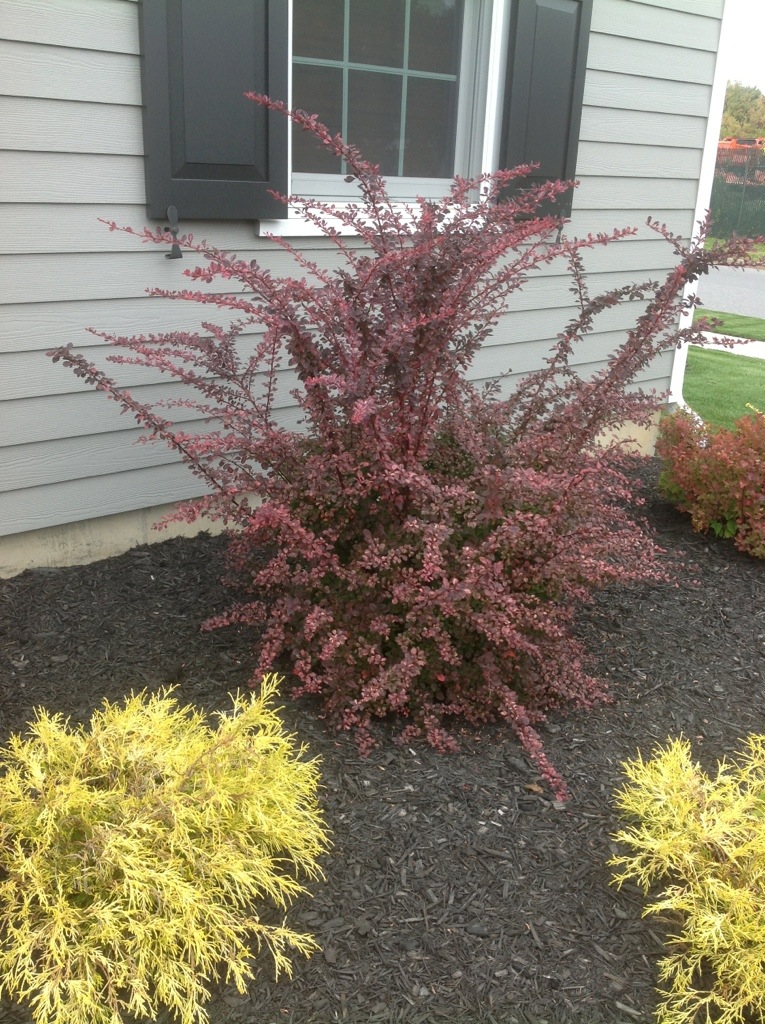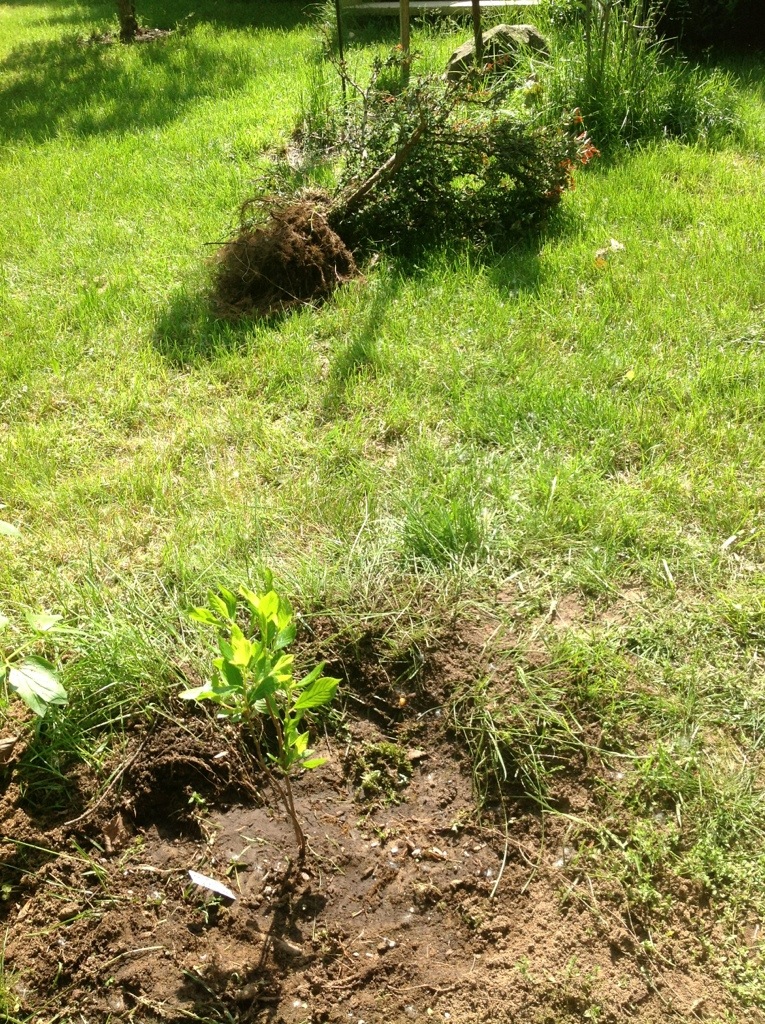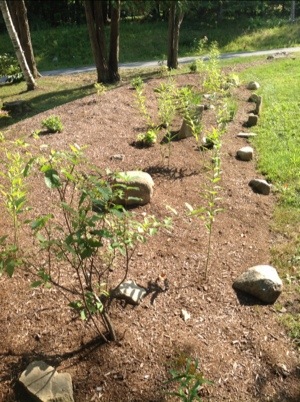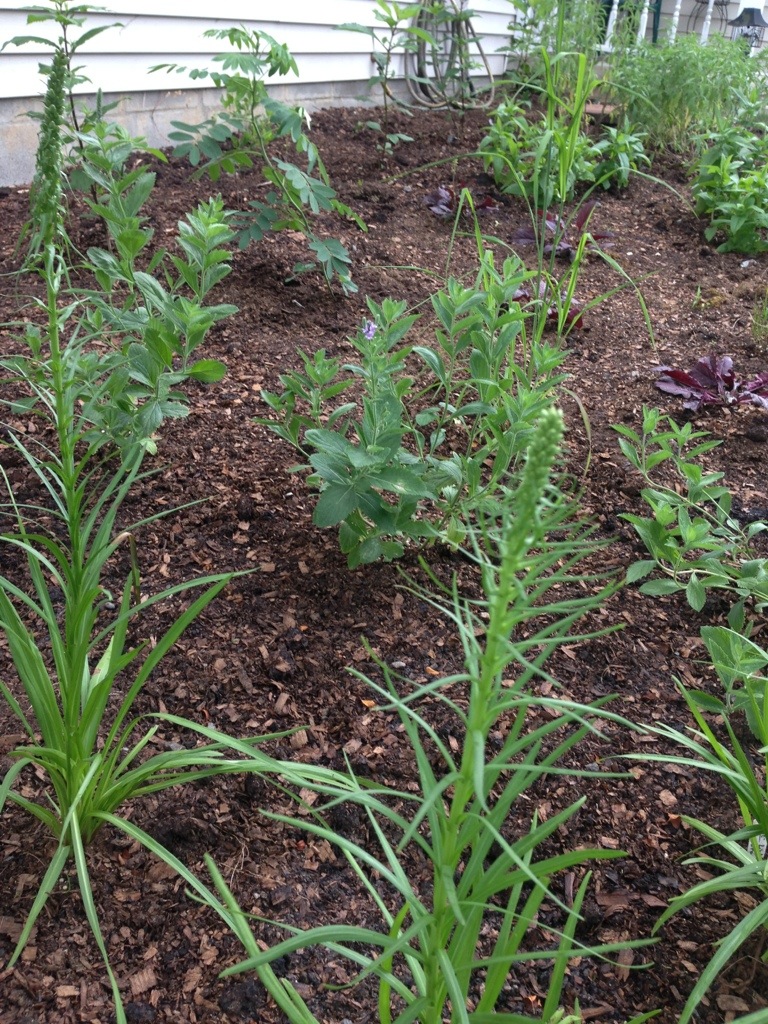Please stop with Lyme tick nurseries. Aka,
How to prevent ticks in your yard.
Certainly, many people are considering while they plan their outdoor spaces: “How to prevent ticks in my yard?” In the region of upstate New York where we live, Lyme disease- an infection of the Borrelia burgdorferi bacteria that’s spread primarily by deer ticks- has become an epidemic. All the odd controversies aside, there are physical realities about this situation that are not being acknowledged. Primarily the reality that we are a part of the problem. Ellen Sousa wrote in Green Garden that, “We are all beginning to pay the price for the ecologically short-sighted landscaping conventions of the past century…” Concerning Japanese Barberry and Lyme ticks, truer words have rarely been spoken.
Landscapers plant lots of Barberry
Landscapers in the northeast region have used Japanese Barberry as the backbone of most of their bland, cookie cutter landscaping sites. Driving through a new development of 200+ homes in southern Saratoga County a few years back, we noted that 95% of the new construction used Japanese Barberry as the mainstay of the plant material.
Accelerating a Public Health Crisis.
There’s the underlying problem of zero biodiversity or habitat reconstruction with such a limited palette. Arguably a more pressing reality is that all this Japanese Barberry accelerates a bad public health crisis. Certainly, Japanese Barberry (an invasive non-native species) spreads rapidly and widely in the woods surrounding the properties they’ve been landscaped into. Consequently, many studies indicate that reproduction of the ticks that carry Lyme disease is facilitated by several physical conditions the shrubs produce.
A site we replaced Japanese Barberry with Clethra alnifolia- a shrub indigenous to the Saratoga County region, which attracts hummingbirds and butterflies.
How it Happens: Lyme Tick Nurseries Explained.
Several colleges in Connecticut studied the link between the presence of Japanese Barberry in a given wooded area and the resulting increase in numbers of ticks that live there. This happens after birds spread the Barberry seeds into the woods, with a virile 90% germination rate of the seeds. The ticks hide safely from deer browsing in the Barberry thickets, because the deer don’t eat the Barberry. Deer prefer native shrubbery that doesn’t have all those thorns. The Japanese Barberry manages to stay very humid- 80% more humid than native shrubbery. This allows ticks to reproduce in exponential numbers, creating “tick nurseries” all over the woods.
Accordingly, the white footed mouse also enjoys the humid climate under the Barberry thickets. Basically, when the mice pass through, the tick larvae pile onto them. All in all, the mice are a vehicle for ticks to move around, usually closer to our living spaces.
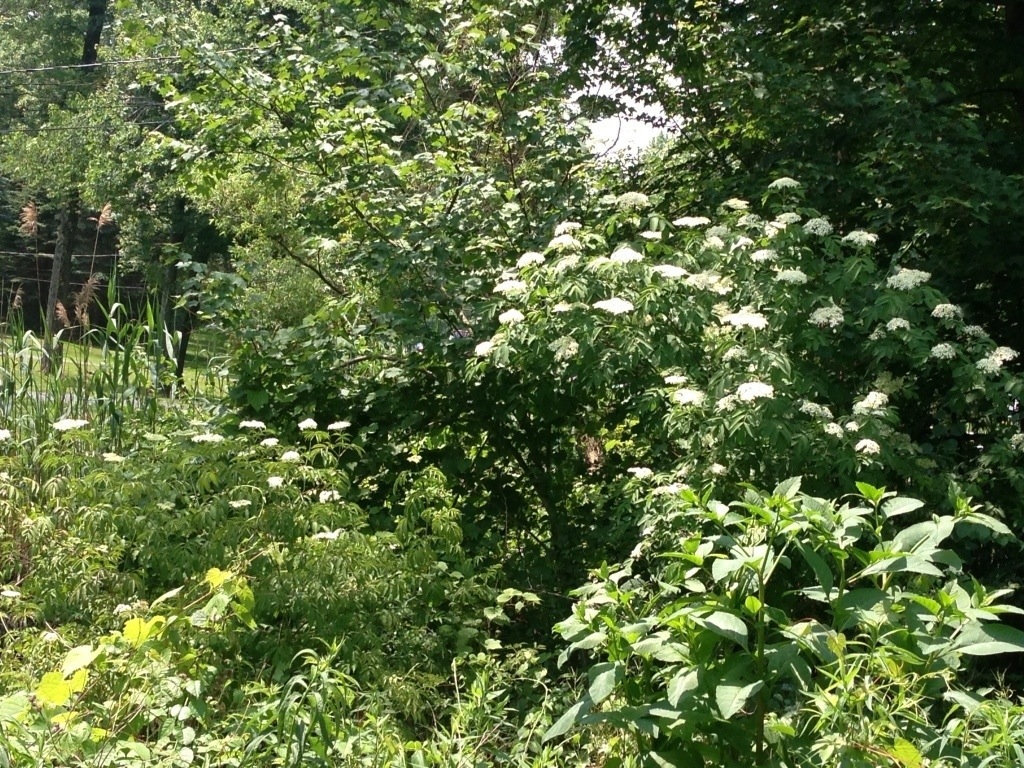 New York native shrub, Elderberry in full bloom in June.
New York native shrub, Elderberry in full bloom in June.
How to Prevent Ticks from Coming in Your Yard- Solutions.
There is a solution to cookie cutter landscape designs. Straightaway, landscapers can and should learn about and use the plant life native to our region. Certainly, it takes creativity. But it’s so worth the extra effort when there are suddenly more birds and butterflies on the property. Native plants take extra effort to locate; most big box garden centers don’t carry much selection of them. Natives can’t be manipulated into blooming by chemical fertilization like many non-natives can. (We can help! Buy native plants here.)
So, please: stop with the Lyme tick nurseries, there are too many amazing native plant species to use Barberry anyway.
How to hire Jessecology for your Albany, Clifton Park, Ballston Spa, Niskayuna, Altamont or Saratoga Springs natural landscaping project:
Surely, we would love to work with you! Fill out our Start Your Project form and we’ll be back in touch soon.

